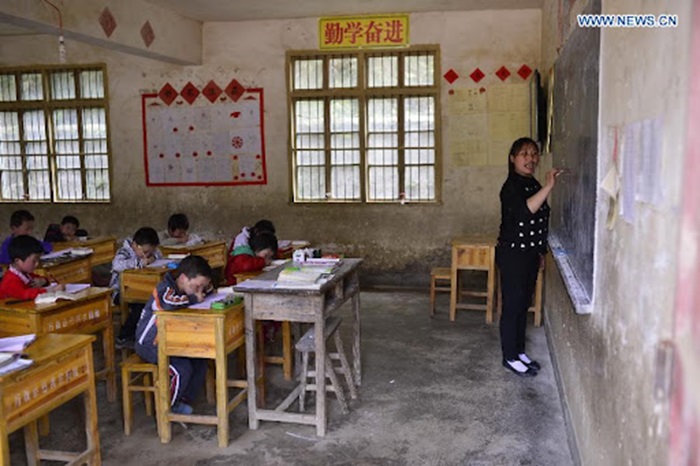China boasts of being the world’s largest education system but a majority of its rural population can be seen struggling to get basic education facilities and proper tuitions.[1] The rural-urban education gap is widening and the number of school dropouts is increasing due to poverty and government apathy towards rural problems.
International non-profit WE said the rural population in China did not have access to adequate education services despite the mandatory policy of free and compulsory education. “In practice the country’s education system is underfunded, leaving rural areas severely short on schools,” it said.
Moreover, the unequal distribution of economic benefits made education unaffordable. “It’s estimated that millions of children work as child labourers due to the high cost of schooling and the economic situation of families in rural China,” it said.[2]
According to the figures furnished in the 2023 China Statistical Yearbook, the rate of enrolment was 99 percent in 2008.[3] However, it fell to 98.3 in 2021 thanks to the policy of school consolidation. Optimisation of resource allocation under the said policy led the number of primary schools in rural areas to reduce from 416,000 in 2001 to 155,000 in 2012.[4]
Later, China reversed the school consolidation policy. Yet, about 16 schools continued to shut down every day in 2018.[5] The number of school dropouts in China is substantial. The percentage of enrolment for higher education was low, at 89.3 percent, compared to the primary education in 2021.[6]
The United Nations’ 2019 Global Education Monitoring Report pointed out that “worse” working conditions, inappropriate appointments of teachers in rural areas and city-oriented teaching had forced many students living in the countryside to leave school education. “With the rapid disappearing of local schools close to rural villages, students and their families are faced with rising obstacles against educational attainment,” reads the report.[7]
A sociology scholar Jason Hung said the teachers who are appointed at the rural schools are not qualified enough. “Schools located in poor, rural regions are often staffed by graduates from lower-tier academic institutions, rendering a rather unsatisfactory teacher and teaching quality and hampering rural students from striving for academic excellence,” Hung wrote in Harvard International Review.[8]
Despite state-subsidised education, rural education is inaccessible due to lack of funds. In such cases, poor people cannot pay tuition fees, thus left out of formal education. “Impoverished rural Chinese youths face perplexing difficulties in educational access,” Hung said.[9]
Yao Lu, a professor of sociology at Columbia University, said education in rural areas of China was unaffordable due to higher expenses. “Although the compulsory education law stipulated that 9 years of the public must be tuition-free, education in China has never been completely free, and educational expenses (e.g., uniforms, books, and supplies) shouldered by the parents have continued to rise,” she said.[10]
Economic backwardness has also been instrumental in driving the youth out of the education system. Migration in search of livelihood in the urban areas has caused the urban-rural disparity to increase.[11] Even if migrants try to enrol their children to schools in cities, the urban schools reject their admissions. This often leads to the denial of education to the poor, rural students, said Yue Gong of Shenzhen-based Peking University Shenzhen Graduate School.[12]
China’s government too has accepted the urban-rural educational gap remained large.[13] Many claimed the Beijing government was reluctant to make necessary investments in education and its policies were unequal and unfair. All this created a disparity between the rural and urban educational infrastructure. “Education in China continues to be affected by a tension between the Chinese Communist Party (CCP)’s interests and the nation’s educational needs,” noted a report by the US-China Economic and Security Review Commission.[14] The urban-rural disparity in China was the outcome of the governance apathy that led to a structural shortage of rural teachers, the imbalanced outflow of rural teachers, and weak teaching, said researchers Jian Li, Eryong Xue and Eryong Xue from Beijing-based China Institute of Education Policy and China Agricultural University. “The number of rural teachers has decreased substantially, especially in deep poverty areas in China, due to the limited governmental political and financial support,” they wrote in the International Journal of Educational Research.[15] (HK Post)






